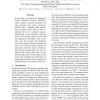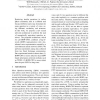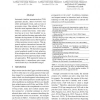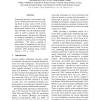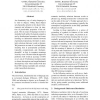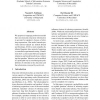ACL
2015
2015
Matrix Factorization with Knowledge Graph Propagation for Unsupervised Spoken Language Understanding
8 years 7 months ago
Spoken dialogue systems (SDS) typically require a predefined semantic ontology to train a spoken language understanding (SLU) module. In addition to the annotation cost, a key ch...
ACL
2015
8 years 7 months ago
2015
In this paper, we present our Crossword Puzzle Resolution System (SACRY), which exploits syntactic structures for clue reranking and answer extraction. SACRY uses a database (DB) ...
ACL
2015
8 years 7 months ago
2015
We exploit the visual properties of concepts for lexical entailment detection by examining a concept’s generality. We introduce three unsupervised methods for determining a conc...
ACL
2015
8 years 7 months ago
2015
We present an extension to incremental shift-reduce parsing that handles discontinuous constituents, using a linear classifier and beam search. We achieve very high parsing speed...
ACL
2015
8 years 7 months ago
2015
ACL
2015
8 years 7 months ago
2015
Automatic timeline summarization (TLS) generates precise, dated overviews over (often prolonged) events, such as wars or economic crises. One subtask of TLS selects the most impor...
ACL
2015
8 years 7 months ago
2015
Computing pairwise word semantic similarity is widely used and serves as a building block in many tasks in NLP. In this paper, we explore the embedding of the shortest-path metric...
ACL
2015
8 years 7 months ago
2015
Labeled data is not readily available for many natural language domains, and it typically requires expensive human effort with considerable domain knowledge to produce a set of la...
ACL
2015
8 years 7 months ago
2015
An elementary way of using language is to refer to objects. Often, these objects are physically present in the shared environment and reference is done via mention of perceivable ...
ACL
2015
8 years 7 months ago
2015
We propose a language production model that uses dynamic discourse information to account for speakers’ choices of referring expressions. Our model extends previous rational spe...

